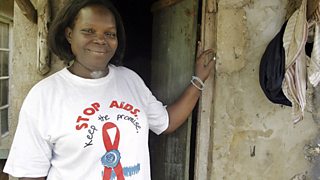Getting to Zero?
Sophia Wilkinson
Senior Health Advisor, Βι¶ΉΤΌΕΔ Media Action

From the despair of the 1990s and early 2000s, there is hope. Hope that the theme of this year's World AIDS Day, Getting to Zero, isn't just a pipe-dream. What does getting to zero actually mean? It means zero new HIV infections. Zero AIDS-related deaths. Zero discrimination.
OK, so according to UNAIDS, during 2011 around 2.5 million people were newly infected with HIV. But that's down from 3.2 million in 2001. And half of the decrease of new infections over the past two years alone has been in newborn children. That's proof that getting to zero new infections among infants is entirely achievable. It should be among adults, as well. We know how.
Globally, there were half a million fewer deaths in 2011 than in 2005, a reflection of the ever-increasing availability of anti-retroviral therapy (ART). Again, proof that zero AIDS-related deaths isn’t an entirely unrealistic thought.
Zero discrimination is probably the hardest to achieve. Though if the first zeros are achieved, then this too will become a thing of the past.
I first became involved with HIV while working as a reporter in Thailand in the mid 1990s. Visiting orphanages for babies and very young children dying from AIDS was a desperately sad, profoundly moving experience. There was no one there over the age of five. They had all died.
What really stirred me into 'doing something', were visits to a hospice for people abandoned by their families to die lonely, painful and frankly, at that time, undignified deaths. And this was the result of stigma. As a reporter, I was able to give these people a voice, I offered them a space in which to tell their stories to a wider audience, to slowly break down the stigma.
This is just one role media and communication can play in getting to zero. It offers those infected and affected by HIV an opportunity to shape the response to the epidemic. It can, and has, also led to positive social and behavioural change. Βι¶ΉΤΌΕΔ Media Action’s is one such example.
The role of communication is also rapidly changing, as the range of prevention and treatment technologies increases. There may be no vaccine yet, but the lone, loud cry of 'ABC' (abstinence, be faithful, or use a condom) has fortunately be joined by other prevention strategies.
As long suspected, the role of ART in prevention was formally recognized earlier this year. Taking anti-retroviral therapy reduces the amount of virus in a person’s body, making them far less infectious. This has increased the imperative for getting more people on to ART, both for their own health and for the health of others.
As well as a huge challenge for health systems, it’s also a communication challenge. People need to know how to take ART properly so it doesn’t fail. Those needing ART also need services that meet their requirements. Sticking rigidly to a daily drug regimen is hard if the nearest clinic takes a day to reach and supplies have run out when you do get there. Media can help people voice their needs.
have shown that medical male circumcision can reduce a man's risk of becoming infected with HIV through heterosexual transmission by up to 60%. As a result many countries are trying to scale-up voluntary medical male circumcision services. Again, communication has a large, integral role to play at both the mass and interpersonal levels.
Male circumcision is far more complicated than a simple operation. It's an issue rooted in tradition and culture. Communities need understand the benefits and risks of services being made available. People need to be empowered to make informed decisions about whether or not they choose to have the procedure (or to circumcise their infants). They also need to know that circumcision is not a magic bullet. It doesn't offer as much protection as condoms. It needs to be part of a package of prevention strategies.
Media and communication also have a role to play in intensifying prevention efforts around three key groups: men who have sex with men, people who inject drugs and sex workers. Without focusing on these highly stigmatized and marginalized groups, we won't be getting to zero. While interpersonal communication is of utmost importance, mass media can reduce societal stigma and discrimination; it can also enable people to realize their rights.
The challenge is still huge. The number of new infections and deaths is still unacceptably high. But at least there is now genuine hope. And Βι¶ΉΤΌΕΔ Media Action is committed to continually innovating in its work around HIV to make getting to zero a reality.
Related links
From the Βι¶ΉΤΌΕΔ Media Action blog:
Elsewhere on Βι¶ΉΤΌΕΔ Media Action:
